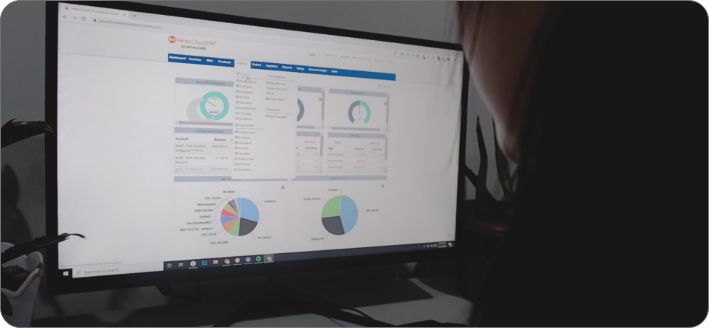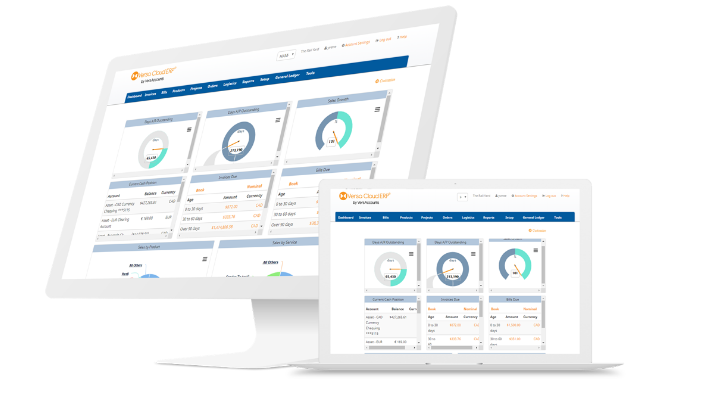The Solution for your OneSaas Problem
The purchase by Intuit of OneSaaS has left customers using OneSaas to connect with their non-QuickBooks backend accounting, inventory management, shipping, and ERP systems. Looking for connectors such as OneSaaS is one option—if such a connector can be found.
Optionally, companies should consider switching their backend system to one with native integrations to the systems they need to connect their backend systems with and eliminate their reliance on 3rd-party connectors.
Find a complete business management system
For example, Versa Cloud ERP is a complete business management offering for inventory-heavy companies that includes built-in capabilities like: accounting, financials, AR/AP, inventory management, manufacturing, warehouse management, shipping, receiving warehouse management, and built connectors for shopping carts like Shopify and online marketplaces like Amazon, eBay, etc.
Switching to Versa can take as little as a few hours and starts at a reasonable price of USD 49/month for one user for the Versa eCommerce Edition.
[widget id=”custom_html-34″]
The Story Behind the Need for Connectors
Companies that use non-QuickBooks accounting and ERP solutions like Xero, Sage 50, Sage 100, Sage 300, MYOB Epicor, and others rely on 3rd party connectors like OneSaaS to connect their backend accounting and ERP systems with other systems. These systems do not integrate connectors into them.
The so-called “Legacy” solutions such as Sage 50, Sage 100, Sage 300, and Epicor were created before the Internet. When connecting to other systems was uncommon.
Or because the more advanced “Best of Breed (BOB)” cloud solutions like Xero, provided the bare minimum capability needed and rely on third parties to deliver the additional functionality for companies to run their business, including the use of connectors like OneSaaS to these third-party solutions.
The Advantage Of 3rd Party Connectors
Connectors are great because that is all the connector vendors focus on. Their goal is to have as many connectors as possible with as many systems as possible. Most have done an excellent job in this regard.
The number of systems they offer connectivity with is quite large, and they usually support a good number of common workflows for everyday use cases.
Setup is also usually relatively quick.
The Problem with Connectors for Integration

No Support for Edge Cases
The biggest problem with connector company connectors is that they do not support the edge cases.
Sometimes, unlike the accounting or ERP company that deals with them all day long, the connector company is not aware of the edge case. Perhaps because the edge case is so rare, it is not worth their while building that support.
For example, the lack of complete and automated support for KITs in a Shopify connector may make the connector unviable for a company that uses them.
Limited Capabilities
Another problem is that the connector company has no control over the capabilities of the systems that it connects with.
Therefore, the capabilities a connector can deliver are limited to the capabilities presented by the interfaces of the systems it connects. In many cases, this is also why 3rd party connectors do a poor job supporting edge cases. Supporting an edge case would require specific capabilities from the interfaces of the systems being connected where such capabilities do not exist.
No Accountability
Then there is the issue of connector problems when they occur. Who should troubleshoot them? Who will fix them?
In almost every case, the customer is left to figure it out for themselves and “prove” which party is responsible for delivering a solution. Heaven helps you if the problem spans two or even three systems.
Costly Customization/Custom Connectors
Getting a connector customized or getting a custom connector built is usually challenging or very expensive with connector companies.
These companies target the mass self-serve market, and customization is incompatible with their business models. So they will likely not have any ability to customize a connector solution, or if they do it, it will be costly.
Pricing is not Fixed
Finally, most connector companies charge by transactions. Either by pricing based on tiers that determine the number of transactions allowed or by charging for transactions themselves.
This usage-based approach can add significant fees as a company grows and may not be the best model for many companies that are used to paying a fixed fee known for the rest of their software systems.
[widget id=”custom_html-34″]
The Versa Cloud ERP Solution: Built-in Connector
To address the above limitations, companies experiencing discontinuation of support for their OneSaaS Shopify, Amazon, or eBay connectors should seriously consider moving to a backend business management system like Versa Cloud ERP with connectors built-in. Doing this would address multiple problems.

Better Connector
The most significant advantage of implementing an ERP system that has built-in out-of-the-box connectors, is you do not have to depend on a 3rd party for your business needs.
You will never again be in the same position as you are with OneSaaS.
Further, you likely have a stronger and closer relationship with the ERP vendor than you have with the connector company.
It is more likely that the ERP supplier will respond more quickly and more completely to the needs of your business.
The capabilities of integration that you get from your ERP vendor would likely be deeper and more comprehensive than any 3rd party connector because the ERP vendor controls both the connector and ERP functionality, which would allow them to overcome many limitations of the shopping cart or marketplace.
More edge cases would be supported out of the box, and those that were not supported out-of-the-box will get support via customer-specific customization.
Problems would be handled faster and with a lot less finger-pointing, if at all. In most cases, the ERP supplier would identify the problem and resolve it, even if it was with the shopping cart or marketplace, by developing a workaround.
Finally, customization of existing connectors and the development of custom connectors would be possible because this is part of the ERP supplier’s business model, and they do this all the time.
Better ERP Capabilities
This may be an excellent time to consider converting to a modern cloud ERP system like Versa to meet your needs today and in the future.
I’m sure you’re thinking, “Easier said than done”. Most sane people look forward to an ERP conversion as much as they do to a trip to the dentist.
But it does not have to be that way.
In this Internet era, where so many things have become faster, cheaper, and more reliable, there should be no issues with how an ERP implementation is done.
[widget id=”custom_html-34″]
Why a New ERP System with Built-in Connectors is a Good Idea
For customers of Legacy ERP Systems, the question is and has always been “When to convert”. If you are one of them, you know you have been putting it off for years.
Legacy systems, and the technology they are built on, was created before the Internet. These systems have been extended to support new ways of doing business and the associated use-case as much as possible. This has been going on for 20 years, a long time in the Internet era, and is not sustainable.
The most important reason why this is not sustainable is the technology they are built on. No one wants to work on them anymore, which is not surprising. No different than working on steam engines in the era of electric vehicles.
For Best of Breed systems like Xero, on the other hand, the issue is whether the business has reached a point where converting to an all-in-one system with built-in connectors makes sense. Unless you can keep going a few more years by adding additional apps as you need for functionality and using 3-rd party connectors to connect with them.
Fast and Convenient ERP Implementation

Implementation of an ERP system has evolved over the years. The traditional approach used to be based on a waterfall model.
First detailed requirements for all business processes and all users of the system, then a detailed implementation plan, implementation (data migration, customization, integration, etc.) in a test system, testing, migration to a production system, go-live, stabilization, and cut-over.
Today it is necessary to implement a modern ERP system for all business processes and all users at the same time. Instead, the implementation is done in small parts and on the production system directly.
Versa Cloud ERP: Easy ERP implementation
For example, implementing the Order-to-Cash process between a Shopify Shopping Cart, POS and Versa can take no more than a few hours. Start by adding Versa to your Shopify Store, configure the built-in Shopify Connector, then launch the initial sync between the systems, and then leave to get a cup of coffee or lunch depending on how many products you have in your Shopify Store.
Versa will download all the Products (including images), Pricing, Inventory Levels from Shopify by the time you get back. Then decide which system (Versa or Shopify) you will use to get paid and invoice and which system you will ship from.
Get your Shopify Store up and running quickly
If you are doing any of these from Versa, you will need to configure Versa’s built-in connectors to the payment gateways and the shipping carriers for label generation. There is also an opportunity to configure forms like Invoices, Packing Lists, etc. to your liking using HTML and CSS. That should take no more than an hour or two.
Following that, you are ready to have Versa bring in the orders from Shopify and process them. Order history is brought into Versa for reporting and review.
Current orders can be brought down as paid or shipped or paid and shipped. Orders that are not shipped yet can be shipped from Versa using Versa’s built-in shipping Module. Those that have not been paid for can be Invoiced from Versa, and payment can be received via Credit Card or ACH.
OneSaaS customers will receive a 50% discount on all Versa Standard Edition annual/recurring fees for the first two years if purchased by 9/30/21.
[widget id=”custom_html-34″]






